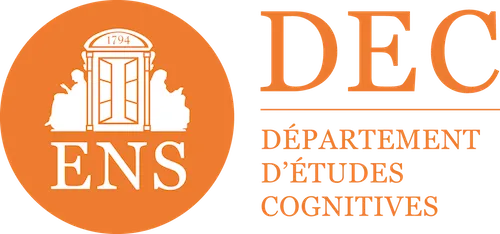

Everything you need to know about training for a professional retraining
More than one employee out of two plans to retrain during their career. Whether it is a need for meaning, a desire for development, a breakup (dismissal, burn-out, contracting) or a simple crush on a new job, retraining has become a common life project, but not without challenges.
And among the many stages of this transition, appropriate training plays a central role. How to choose your training for a professional retraining? What are the mechanisms to finance it? Which jobs recruit and offer real prospects? And above all, how can you get support in this process so as not to get lost?
This article offers you a complete overview to get started in your professional retraining... and why not with the Didask LMS solution, specialized in effective and tailor-made apprenticeships.
What is a professional retraining?
Professional retraining refers to the fact of changing jobs or sectors of activity after a first work experience. It can be chosen to give meaning to one's daily life, or to impose itself in the face of a difficult situation, such as a loss of job, professional exhaustion or an evolution within the company that has become unsatisfactory.
This type of transition is often based on a training system, an increase in skills or a validation of acquired experience (VAE). A skills assessment can also be useful to take stock of your career, while a professional transition project (PTP) allows you to train while maintaining your status as an employee.
Changing jobs does not necessarily mean starting from scratch: your skills, your personal and professional experiences, and your past experiences can be valued. It is even possible to obtain a recognized certification, including through distance training, to facilitate recruitment or integration into a new company. With the right tools and appropriate support, your retraining can become a coherent and motivating journey, focused on a job with the future.
Choosing the right training for a professional retraining
Finding a course adapted to your project is the cornerstone of a successful retraining. Here are the key steps:
1. Take stock of your skills and desires
Before you start training for a career change, start by exploring what you already have in hand. Your past experiences, your technical skills, your interpersonal skills, but also your passions or your personal preferences: all this constitutes a valuable basis for building a new coherent professional project.
Changing paths is not starting from scratch, it is transforming what already exists. Ask yourself the right questions: what is it that really motivates you? What would you like to find (or avoid) in your future job? Take the time to assess your desires, your personal constraints, your short or long term goals. This overview is essential to identify a realistic and motivating direction.
2. Study the sectors that are recruiting
Successful professional retraining also means being realistic. While the desire for a new job is essential, it must be accompanied by a clear vision of the job market. In other words, we must aim for sectors that really recruit and offer real prospects for development.
Skills needs are changing rapidly: the jobs of yesterday are no longer necessarily those of tomorrow. This is why it is important to choose a course that adapts to current market requirements and that integrates regular knowledge updates. A good reference: sectors in tension, where job offers are numerous and qualified profiles are not available.
There is no shortage of promising fields and can be suitable for very diverse profiles. Take the time to find out about the concrete opportunities of each profession before making your choice.
3. Compare training offers
Here are some criteria to consider:
- The required entry level (graduate or not)
- The duration and the modality (face-to-face, remote, hybrid)
- Educational content and certifications targeted
- The rate of return to work
- Cost and financing arrangements
On this point, the platform Didask offers a catalog of training courses tailor-made, oriented on actionable knowledge, designed with an author tool that is easy to use and boosted by a Educational AI.
4. Need a helping hand? Have someone accompany you
Are you hesitant about which direction to take or do you not know where to start your retraining? Get help! For example, a Professional Development Counsellor (CEP) can become a valuable ally in this phase of reflection. This guidance and training professional supports all working people (employees, self-employed or job seekers) free of charge in building their professional future.
Her role? Help you to clarify your ideas, identify your skills, explore promising jobs and define a realistic project. Thanks to personalized support, it guides you in the development of a concrete action plan and informs you about financing arrangements and local opportunities.
The CEP is well aware of the economic fabric of your region: it will thus be able to guide you towards training courses and sectors that recruit near you.
What is the average duration of a professional retraining?
The duration of a retraining project varies according to the profession targeted, the training path chosen and the pace of learning. In general, it takes between a few months and three years to fully retrain.
This delay depends largely on the training to be followed: some jobs require a simple upgrade, while others require a diploma or an official certification, especially in regulated sectors such as health or early childhood.
But training is only one step. A successful retraining also involves an exploration phase: learning about the job, exchanging with professionals, testing your project during immersions or internships. This early work is essential to validate your choices and ensure the feasibility of the project.
The most effective training courses to retrain
Here are some professional courses that adapt well to a change of career:
- Short and certifying courses: ideal for quickly acquiring targeted skills (e.g. digital marketing, project management, office automation, languages, etc.).
- Diploma courses: BTS, pro licenses, masters, often accessible via the VAE.
- Bootcamps and intensive training: programming, web development, data...
- Dual training courses: to learn a job while being on a permanent or fixed-term contract.
What are the sectors that recruit the most after a retraining?
Focus on jobs of the future to secure your retraining. Opting for a promising profession means putting all the chances on your side to quickly find a job at the end of the training. In fact, some professions have a very high rate of professional integration in the six months following retraining.
- Health professions, a winning choice: the health sector remains one of the most dynamic. Numerous positions are available and the needs are constantly growing. Caregiver, childcare assistant, nurse, educational assistant... The training courses are well structured, with concrete and rapid opportunities: more than 8 out of 10 people find a job directly linked to their training.
- Building, a sector in tension: electricity, plumbing, climate engineering or construction... Building jobs are recruiting massively. The courses are often short, practical, and very professional. With a high success rate, rapid integration and numerous permanent contracts at the end of the day, this is an option to consider if you like concrete work and manual work.
- Administrative functions, a sure value: accounting, management, human resources or even secretariat... These are jobs popular with companies. These positions require rigor and organization, and the associated courses offer a good balance between theory and practice. It is also a sector where there are numerous bridges between functions.
- Digital technology, a booming sector: digital technology includes jobs that are in high demand such as web developer, data analyst, UX designer. This dynamic sector offers numerous opportunities, strong career development and often the possibility of teleworking. The courses are accessible, sometimes without prerequisites, and allow you to retrain quickly thanks to short and professional courses. Curiosity, logic and an appetite for digital tools are your best assets for success.
What assistance is available to finance a retraining?
A retraining project can represent an investment of time and money. Fortunately, several mechanisms make it possible to finance your training, while sometimes maintaining remuneration.
1. The CPF (Personal Training Account)
The CPF is the most accessible tool. Each employee accumulates rights that he can mobilize at any time for qualifying training, even on a job or on a fixed-term contract.
2. The PTP (Professional Transition Project)
Formerly “CIF”, the PTP allows an employee on a permanent or fixed-term contract to follow a long training course to change jobs, while benefiting from the partial or total maintenance of his salary.
3. The AIF (Individual Training Assistance)
Intended for job seekers, it is issued by Pôle Emploi under certain conditions. It can complement CPF financing.
4. The skills development plan
Set up by the employer, this system finances training courses to promote development or retraining within the company.
5. Regional aid
Some regions offer specific assistance for employees or collective retraining (following restructuring, for example).
How a suitable learning platform can transform the retraining experience
Successful professional retraining is largely based on the quality of the training followed. In this context, companies and training organizations are looking for solutions that maximize the effectiveness of learning while adapting to the time constraints and individual paths of learners.
This is where platforms like Didask can make a difference. Founded by researchers in cognitive sciences, this French solution was specifically designed to optimize the acquisition of new skills by relying on the brain's natural learning mechanisms.
Scientifically optimized learning
The particularity of Didask lies in its approach focused on scientific evidence of learning. Where many platforms just make content available, Didask (LMS platform) structures the experience to ensure a real appropriation of skills:
- Breakdown into micro-objectives: each new concept is presented in the form of learning “granules”, to avoid cognitive overload, which is often a problem during a retraining
- Exercises adapted to each stage: the platform automatically integrates practices that correspond to the type of learning (memorization, application, deconstruction of preconceived ideas)
- Anchoring sessions: spaced flashcards and reminders ensure that knowledge is permanently stored in memory
Educational AI at the service of personalization
For companies that support employees in the process of retraining, one of the major challenges is the adaptation of career paths with varied profiles. That's why Didask developed a educational artificial intelligence capable of:
- Automatically transform existing content (presentations, technical documents) into interactive training
- Analyze the strengths and weaknesses of each learner to propose a personalized course
- Provide accurate and constructive feedback on the exercises carried out
- Serve as a teaching assistant available at any time to answer specific questions
This approach is particularly relevant in the context of retraining, where learners arrive with different backgrounds and specific needs. AI makes it possible to offer almost individual support, even on a large scale.
Concrete results for reconversions
Companies that use Didask to support the retraining of their employees observe several concrete benefits:
- Accelerated skills development: optimized courses allow you to acquire the fundamentals of a new profession more quickly
- Increased motivation: personalized feedback and visible progress maintain commitment, which is crucial during a retraining
- Better transfer to the field: role plays effectively prepare for the concrete application of new skills
Precise monitoring of progress: dashboards make it possible to monitor the progress of each employee as closely as possible
To retrain is also to reinvent yourself
Changing jobs is a step towards yourself. A successful professional retraining is not only a matter of technical skills: it is a life project that deserves adequate human and technological support.
Whether you are looking for meaning, looking for a new sector, or eager to breathe new life into your career, there is a course for you. And maybe it's already in the Didask training catalog.
There is never a perfect time to retrain. But there are tools, devices, supports and platforms that make this moment possible, accessible and stimulating.
With solutions like Didask, access to training is simplified, customizable and adapted to each professional career path. Thanks to adaptive learning, LMS tools, the AI assistant and a learning logic oriented to real efficiency, you are armed for a successful transition. So, are you ready to (re) start a new role in your professional life?
Make an appointment directly with our eLearning experts for a demo or simply more information.
.png)











